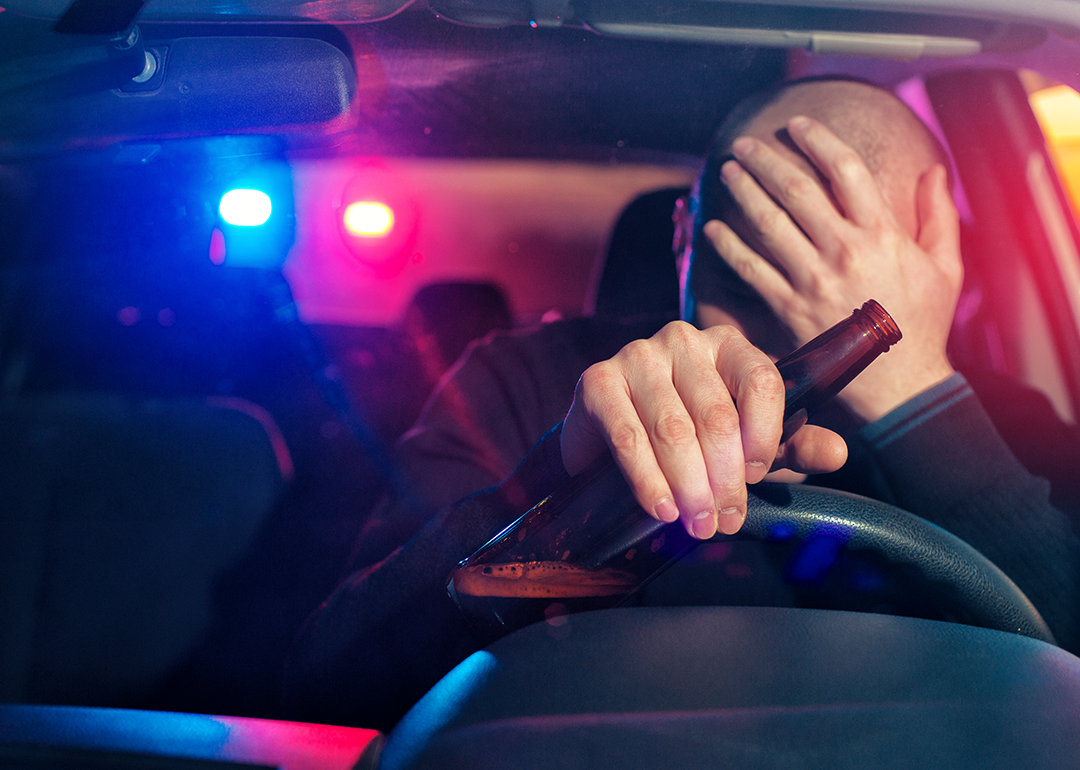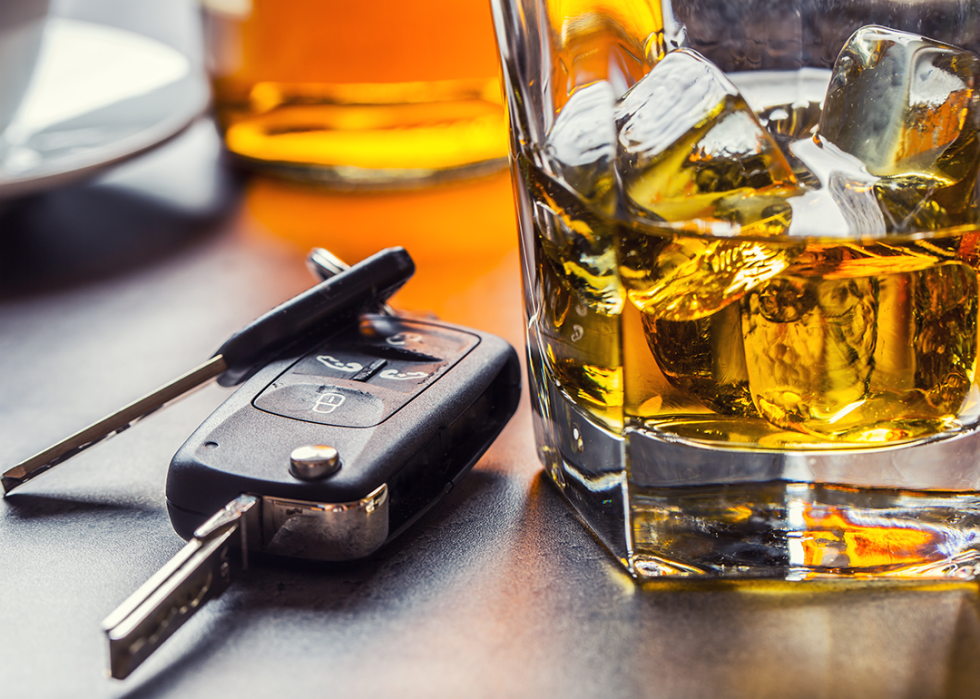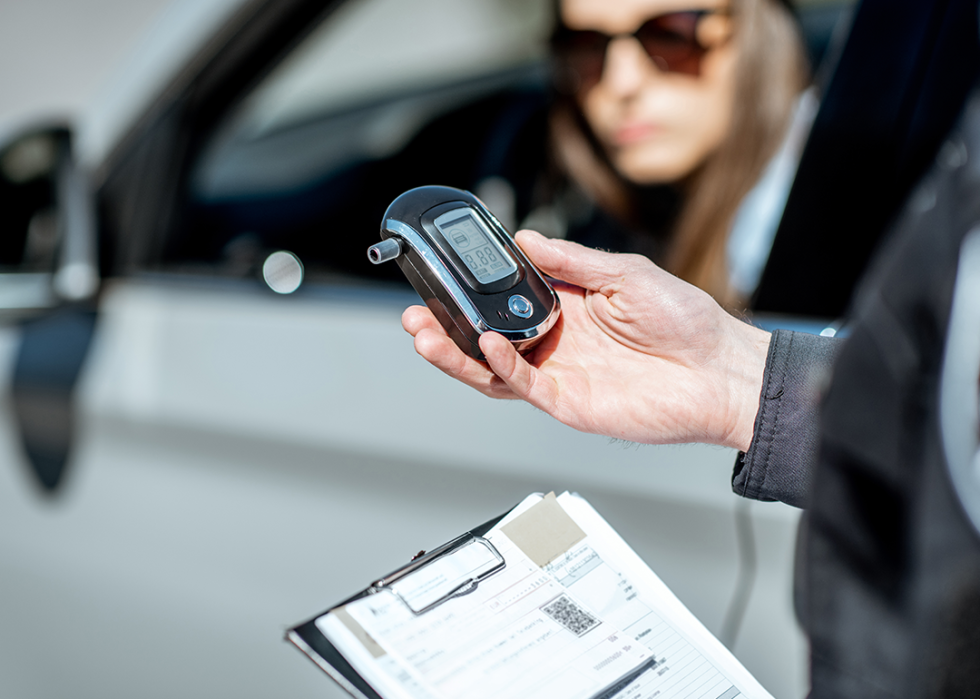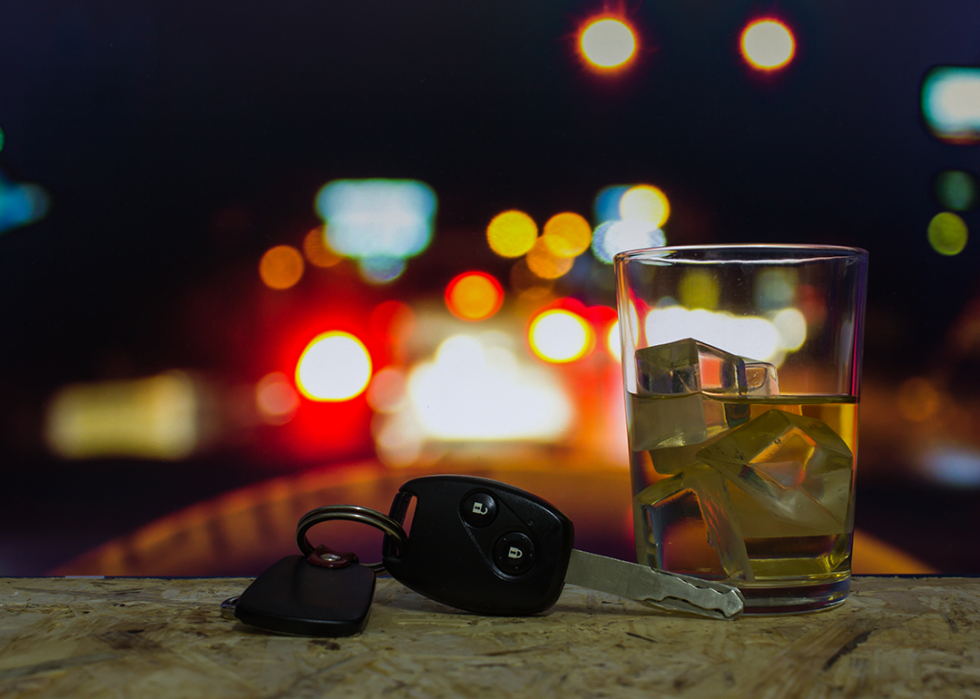
A sobering history of drunk driving in the US and why it's still so prevalent
This story originally appeared on CheapInsurance.com and was produced and distributed in partnership with Stacker Studio.
A sobering history of drunk driving in the US and why it's still so prevalent
Over the decades, a combination of laws, public service campaigns, and fierce opposition by advocate groups turned an activity that was merely frowned upon in the 1970s into one that carries severe legal consequences and public shame. But tens of thousands of Americans still die from that activity every year.
Driving under the influence of any substance risks not only the driver's life but the lives of everyone else sharing the road with them.
In the 1980s, drunk driving claimed almost 20,000 lives American lives per year and accounted for over 40% of all crash deaths, according to stats from the National Highway Traffic Safety Administration and the National Safety Council stats.
But efforts to save Americans from the perils of drunk driving have made little progress since that peak, still accounting for about 30% of lives lost in crashes since the late 1990s.
CheapInsurance.com analyzed data from the Centers for Disease Control and Prevention and the National Transportation Safety Board data to trace the history of America's battle with the dangers of drunk driving to the current day and considered measures states can take to discourage the act further.
It's been a decade since the NTSB made a slew of recommendations to enact new laws aimed at lowering the frequency of drunken driving on U.S. roads—an offense that places others at risk of injury or death and is guaranteed to raise one's car insurance rates.
To date, few states have taken action to implement reforms recommended by NTSB. Those suggestions include lowering blood alcohol concentration limits to 0.05% concentration, requiring drivers arrested for DUI to use an interlock device, suspending those drivers' licenses, requiring law enforcement to record the establishment that last served a drink to a driver arrested for DUI, and enhancing sobriety checkpoints and DUI enforcement generally.
The recommendations aim to move the U.S. closer to a world in which zero traffic accidents happen as a result of drinking and driving.
"Although there has been good progress by states in some areas, much more needs to be done to significantly reduce and mitigate crashes related to alcohol-impaired driving," the NTSB wrote in a report issued in summer 2022.

The limitations of existing safety laws
Safety regulations put in place over the last 100 years have shown varying degrees of success in saving lives on the road. The most successful were mandatory seatbelt laws.
Manufacturers began installing seat belts in cars in the 1950s. However, by the late 1970s and into the early 1980s, only about 1 in 10 occupants used a seatbelt when in a moving car, according to the CDC. In the years following, state-implemented seatbelt requirements—beginning with New York's in 1984—saved thousands of lives annually. Today, 90% of drivers and front-seat passengers use seatbelts, estimated to save more than 10,000 lives yearly, according to the NHTSA.
But not all driver safety regulations have had the same long-lived success.
The law establishing 21 as the minimum age required to purchase alcohol in 1984 had a substantial impact on lowering car crashes over the following decade.
Around the same time, the push to eliminate drunk driving gained a critical ally in the advocacy group Mothers Against Drunk Driving. MADD was formed in 1980 by two grieving mothers of young girls killed by repeat DUI offenders.
On the morning of Aug. 31, 1988, New York Times subscribers picked up a front page with a story on it detailing a new national public service campaign inspired by Scandinavian countries. The "designated driver" campaign was born. By 1991, the term had become a household phrase, even earning itself an entry in the dictionary.
However, success in lowering alcohol-related death on the road has "plateaued" since the mid-1990s, the NTSB wrote in its 2013 recommendation report for states. Since 1995, roughly 1 in 3 deadly crashes have consistently involved alcohol.

Advocates push for lower acceptable blood alcohol concentrations for drivers
It wasn't until the early 2000s that states began passing laws limiting how much alcohol a driver can legally have in their bloodstream. In 2000, then-president Bill Clinton signed a law limiting federal highway construction funding for states that didn't pass a law making it illegal to drive with more than a 0.08% blood alcohol concentration by 2004.
Studies have found strong evidence suggesting that 0.08% BAC limits help reduce drunk driving. Those who opposed the laws at the time argued it would effectively criminalize drinking socially, damage the economy, and overwhelm the country's criminal justice system. MADD supported the federal 0.08% BAC law. Today, the group considers that requirement among its most significant legislative achievements.
But the push to limit alcohol intoxication while driving also runs up against one of the longest-standing cultural norms in American society: a focus on drinking alcohol as a form of entertainment.
Drinking culture partially explains why drunk driving deaths are most prevalent on weekend nights when it is more socially acceptable to drink to the point of intoxication, Arizona State University's Center for Problem-Oriented Policing wrote in a 2006 report identifying factors that influence drunk driving.

States move slowly to ramp up BAC enforcement and deterrents
An uptick in alcohol-related driving deaths since the COVID-19 pandemic has encouraged a record number of states to make a serious push for the NTSB's recommended 0.05% BAC law. Those states face opposition, however, similar to the arguments made two decades ago.
In Washington, restaurant industry lobbyists defeated efforts to implement a 0.05% BAC law, arguing lower limits would cost the economy jobs and create greater liability for servers who cannot gauge whether someone has less than a 0.08% BAC.
Utah is the only state to pass a law limiting drivers to a 0.05% BAC, as recommended by the NTSB. One year after Utah enacted its 2018 law, MADD endorsed the passage of a 0.05% BAC law in Michigan.
Facing similar tough opposition is the NTSB's recommendation that law enforcement record what's called the "place of last drink" when they arrest someone in an impaired-driving case. Only three states have laws requiring officers to record the place that last served a DUI recipient alcohol. Collecting data on these bars and restaurants is an effective and low-cost way of identifying establishments with a problematic pattern of overserving alcohol, according to the Medical College of Wisconsin.
Despite the lack of traction for holding retailers accountable and lowering permissible blood alcohol concentrations, one other NTSB recommendation is progressing in state legislatures.
Alcohol interlock devices, invented in the late 1960s, became mainstream in the 1980s. The tool requires a driver to blow into it before being allowed to start a vehicle, turning it off if the person's BAC is too high. In the 1990s, updates to the devices made it more difficult for someone under the influence to bypass. A 2016 study published in the American Journal of Public Health found that requiring interlocks after a DUI conviction helped lower alcohol-involved crash deaths by 15%.
Today, 30 states and the District of Columbia require the installation of alcohol interlocks on all DUI offenders' vehicles. Kentucky and New Jersey are among the most recent states requiring interlock devices for all offenders. Other states only require interlocks for people with multiple DUI convictions or with exceptionally high blood alcohol concentrations.
Story editing by Jeff Inglis. Copy editing by Kristen Wegrzyn.



